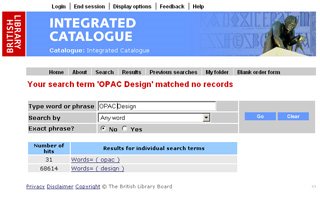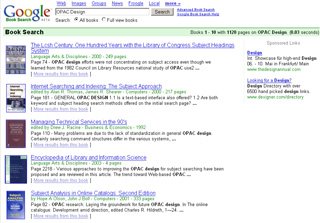26. April 2006
21. April 2006
Google Flight Simulator (GFS)
 I had this idea for quite some time. But since i don't have time to build it, i thought i just might blog the prototype.
it's supposed to be some kind of ajaxian-flash-google maps mix. with chat, keyboard flight control and the map zooming in and out...
I had this idea for quite some time. But since i don't have time to build it, i thought i just might blog the prototype.
it's supposed to be some kind of ajaxian-flash-google maps mix. with chat, keyboard flight control and the map zooming in and out...
 Ein paar Versuche um Blogger besser kennen zu lernen.
Diese Idee bezüglich eines Flugsimulators der auf den Google und Yahoo! Maps bassiert, trage ich schon eine Weile mit mir rum. Vielleicht hat das ja schon jemand umgesetzt...?
Ein paar Versuche um Blogger besser kennen zu lernen.
Diese Idee bezüglich eines Flugsimulators der auf den Google und Yahoo! Maps bassiert, trage ich schon eine Weile mit mir rum. Vielleicht hat das ja schon jemand umgesetzt...?
Microformats
 Microformats, nicht zu verwechseln mit Mikroformen (wie Mikrofilm oder
Mikrofiche) sind kleine semantische Elemente die in Webseiten integriert
werden können um diese zu erweitern.
Microformats, manchmal auch „lower-case semantic web“ genannt versuchen Bedeutungen und Beziehungen auf möglichst einfache Art zu transportieren.
Die Vereinfachung und Reduktion auf das Wesentliche, wobei versucht wird
möglichst vorhandene Pfade zu begehen, anstatt das Rad neu zu erfinden, sind
ein Grundprinzip der Microformats.
Mit Microformats versucht man nicht neue Sprachen zu entwickeln oder
allgemeine Ansätze für alle möglichen Zustände zu finden. Vielmehr geht es um
das Lösen ganz spezifischer Probleme, wobei versucht wird ein Thema bis zum
eigentlichen Kern aufzubrechen um so das Problem weiter reduzieren zu können.
Microformats, nicht zu verwechseln mit Mikroformen (wie Mikrofilm oder
Mikrofiche) sind kleine semantische Elemente die in Webseiten integriert
werden können um diese zu erweitern.
Microformats, manchmal auch „lower-case semantic web“ genannt versuchen Bedeutungen und Beziehungen auf möglichst einfache Art zu transportieren.
Die Vereinfachung und Reduktion auf das Wesentliche, wobei versucht wird
möglichst vorhandene Pfade zu begehen, anstatt das Rad neu zu erfinden, sind
ein Grundprinzip der Microformats.
Mit Microformats versucht man nicht neue Sprachen zu entwickeln oder
allgemeine Ansätze für alle möglichen Zustände zu finden. Vielmehr geht es um
das Lösen ganz spezifischer Probleme, wobei versucht wird ein Thema bis zum
eigentlichen Kern aufzubrechen um so das Problem weiter reduzieren zu können.
Ein paar Microformat Prinzipien
- Gestalte zunächst für Menschen, dann für Maschinen
- Halte dich an bereits vorhandene Muster
- Modularität
- Leicht zu implementieren
- Es geht um aktuelle Probleme, nicht um Vergangenes oder Zukünftiges
<div class="geo">
<abbr class="latitude" title="37.408183">N 37° 24.491
<abbr class="longitude" title="-122.13855">W 122° 08.313</abbr>
</div>
(XHTML Friends Network), ein bestimmter Wortschatz um Menschliche Beziehungen
via Hyperlinks zu beschreiben. Beispielsweise verweise ich so auf meinen
Kollegen Clemens, den ich schon mal getroffen habe:
...Hier geht es zu...
<a href="http://clemens.blogs.com/" rel="co-worker met">
Clemens Blog
</a>
...
Wobei die Begriffe co-worker und met zum festen xfn
Vokabular gehören, welches durch SPACE getrennt frei kombinierbar im
rel-Attribut stehen kann.
- hCard, ein Kontakt
<div class="vcard">
<a class="url fn" href="http://thehotstrudel.blogspot.com/">
Jan Jursa</a>
<span class="org">Meine Firma</span>
</div>
Beginnend mit der Root Klasse vCard kombiniert man zur Verfügung
stehende Begriffe aus einem gegebenen Satz an Ausdrücken als Werte jeweiliger
class-Attribute: url, fn (family name), org (Organisation).
Microformats und Bibliotheken?
Der Einsatz von Microformats die sich mit nicht-bibliothekarischen Problemen befassen ist offensichtlich. hCalendar um Termine auszuzeichnen, hCard um Kontakte anzugeben, um nur zwei Beispiele zu nennen. Aber es gibt spezifischere Probleme deren Nutzung interessant wäre. Teilweise gibt es bereits Format Vorschläge. Beispielsweise ein Microformat für Abstracts, oder der Microformat-Vorschlag boom! für Bücher. Wie gesagt, geht es bei Microformats grundsätzlich darum, Semantiken für den Menschen leicht verständlich auszuzeichenen. Von dieser standardisierten Datenpräsentation proffitiert man, indem Andere (Menschen, Maschinen) die Inhalte leicht aufgreifen und weiterverarbeiten können, und so die eigenen Daten einem erweiterten Nutzerkreis zur Verfügung stellen.
11. April 2006
Keyword search for "OPAC design"
 I have googled national libraries and picked some arbitrarily.
Without refining my search, I have searched for "OPAC design" in the OPAC of the respective library.
What did I find? Well, nothing at the DDB. At the British Library just as little. The next national library is only a click away, therefore I rush over to Scotland. The National Library of Scotland offers 9951 hits sorted after relevance.
I have googled national libraries and picked some arbitrarily.
Without refining my search, I have searched for "OPAC design" in the OPAC of the respective library.
What did I find? Well, nothing at the DDB. At the British Library just as little. The next national library is only a click away, therefore I rush over to Scotland. The National Library of Scotland offers 9951 hits sorted after relevance.
- Hit 1: Electronic Systems and software, 2003
- Hit 2: Energy engineer, 2003
- Hit 3: IEE proceedings. Control theory and application, 1994
- Hit 4: OPAC-Kolloqium [...] [...], 1991
- International Conference on parallel computing..., 2004
- International Interconnect Technology Conference, 2004
- IEEE rots International symposium on Defect and Tolerance into vlsi Systems, 2003
- Designs for villa and other rural buildings, by Edmund Aikin,... of engraved on 31 plates, with project and, explanation,...
- Design of Chinese buildings, furniture, dress, machines and utensil, engraved by, Thely best Hands, from The original drawn in China by Mr. Chambers,...
- A designs for plentie by to university verse space planting of fruittrees...
Google Book Search (Beta) to the rescue
As a start a corresponding search delivers 10 books. This is a sufficient but easily comprehensible number. The hit list:- The Lcsh Century: One Hundred Years with the Library of Congress Subject Headings System Page 74 - OPAC design efforts were not concentrating on subject access even though...
- Internet Searching and Indexing: The Subject Approach Page 181 - GENERAL OPAC DESIGN 1.1 Is a text-based interface also offered?...
- Managing Technical Services in the 90's Page 110 - Many problems are due to the lack of standardization in general OPAC design. Certainly searching command structures differ in the various systems, ...
- Encyclopedia of Library and Information Science Page 2218 - Various approaches to improving the OPAC design for subject searching have been proposed and are reviewed in this article. The trend toward Web-based OPAC ...
 But is the Encyclopedia of Library and Information Science really not available in the DDB? I return and search for "Encyclopedia of Library and information Science". Strike! There it is.
And how about "The Lcsh Century: One Hundred Years with the Library of Congress Subject Headings System" at the British Library? Gotcha!
So, does the user have to be able to dig or does a library have to be able to present? The next library is only a click away, and in case of any doubt it may be the search engine of your choice.
But is the Encyclopedia of Library and Information Science really not available in the DDB? I return and search for "Encyclopedia of Library and information Science". Strike! There it is.
And how about "The Lcsh Century: One Hundred Years with the Library of Congress Subject Headings System" at the British Library? Gotcha!
So, does the user have to be able to dig or does a library have to be able to present? The next library is only a click away, and in case of any doubt it may be the search engine of your choice.
Suche OPAC Design
 Ich habe nach Nationalbibliothek gegoogelt und einige willkürlich herausgepickt.
Ohne meine Suche großartig zu verfeinern, habe ich im OPAC der jeweiligen Bibliothek nach „OPAC Design“ gesucht.
Was kam heraus? Nun bei der DDB nichts. Ebenso wenig bei der British Library. Auch die nächste Nationalbibliothek ist nur einen Klick entfernt, also haste ich weiter nach Schottland. Die National Library of Scotland bietet 9951 Treffer nach Relevanz sortiert.
Ich habe nach Nationalbibliothek gegoogelt und einige willkürlich herausgepickt.
Ohne meine Suche großartig zu verfeinern, habe ich im OPAC der jeweiligen Bibliothek nach „OPAC Design“ gesucht.
Was kam heraus? Nun bei der DDB nichts. Ebenso wenig bei der British Library. Auch die nächste Nationalbibliothek ist nur einen Klick entfernt, also haste ich weiter nach Schottland. Die National Library of Scotland bietet 9951 Treffer nach Relevanz sortiert.
- Treffer 1: Electronic systems and software, 2003
- Treffer 2: Power engineer, 2003
- Treffer 3: IEE proceedings. Control theory and applications, 1994
- Treffer 4: [...] OPAC-Kolloqium [...], 1991
- 1: International Conference on Parallel Computing..., 2004
- 2: International Interconnect Technology Conference, 2004
- 3: IEEE International Symposium on Defect and Fault Tolerance in VLSI Systems, 2003
- 1: Designs for villas and other rural buildings, by Edmund Aikin,... engraved on 31 plates, with plans and explanations,...
- 2: Designs of Chinese buildings, furniture, dresses, machines and utensils, engraved by the best hands, from the originals drawn in China by Mr. Chambers,...
- 3: A Designe for plentie by an universall planting of fruittrees...
Google Book Search (Beta) zur Rettung
Eine entsprechende Suche liefert zunächst 10 Bücher. Das ist eine ausreichende aber überschaubare Anzahl. Die Trefferliste:- The Lcsh Century: One Hundred Years with the Library of Congress Subject Headings System Page 74 - OPAC design efforts were not concentrating on subject access even though...
- Internet Searching and Indexing: The Subject Approach Page 181 - GENERAL OPAC DESIGN 1.1 Is a text-based interface also offered?...
- Managing Technical Services in the 90's Page 110 - Many problems are due to the lack of standardization in general OPAC design. Certainly searching command structures differ in the various systems, ...
- Encyclopedia of Library and Information Science Page 2218 - Various approaches to improving the OPAC design for subject searching have been proposed and are reviewed in this article. The trend toward Web-based OPAC ...
8. April 2006
Test2
 http://www.sxc.hu/photo/474798
So, my blog is still pretty heavy under construction. I tried to personalize it a bit, but of course there's so much to do and so less time. 24 hour days are simply not long enough.
This is just another test. I am uploading the pictures with Hello, the new Picasa companion. It works pretty well.
http://www.sxc.hu/photo/474798
So, my blog is still pretty heavy under construction. I tried to personalize it a bit, but of course there's so much to do and so less time. 24 hour days are simply not long enough.
This is just another test. I am uploading the pictures with Hello, the new Picasa companion. It works pretty well.
5. April 2006
Test
so, i set up a blog. finally :-). i will try to post along as i write my master's thesis in LIS. well, we'll see what happens.






